Unlocking Green Thumbs: A Guide on How to Grow Weed Seeds
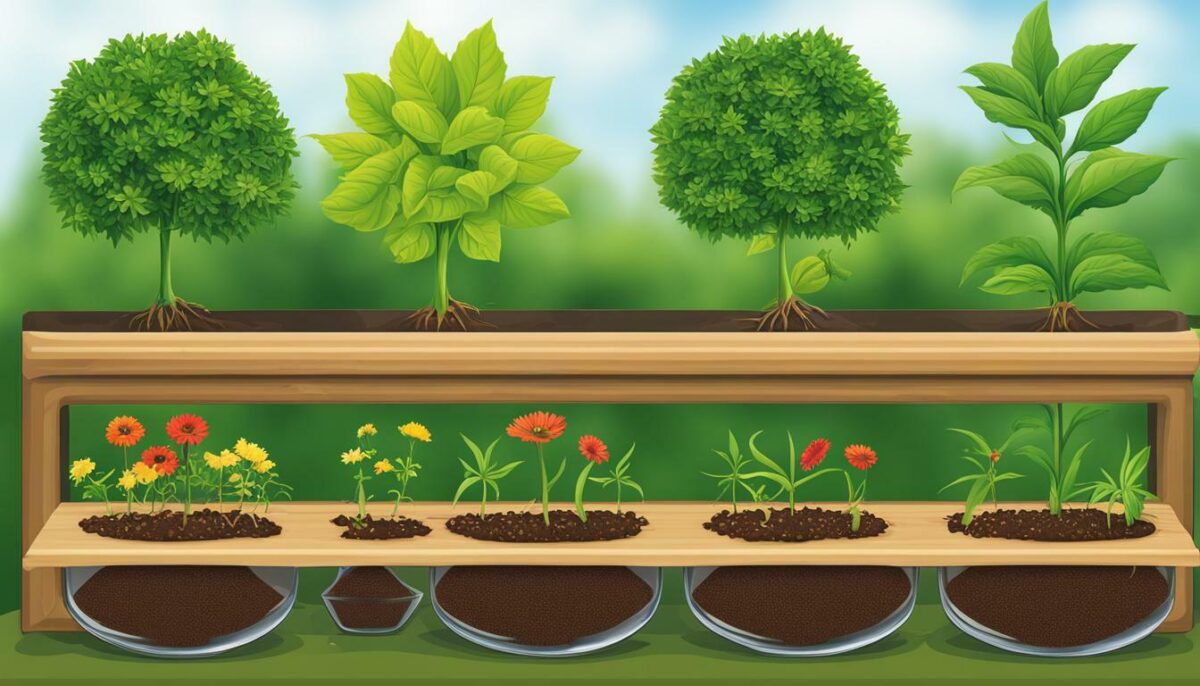
Welcome to my comprehensive guide on how to successfully grow weed seeds. If you’re new to cannabis cultivation or looking to improve your skills, this guide will provide you with all the information you need to get started. From selecting the right strains to providing optimal growing conditions, you’ll learn the step-by-step process for cultivating healthy, thriving cannabis plants in the comfort of your own home. Let’s dive in and grow some green!
- Learn how to select the best cannabis seeds for your needs
- Discover the optimal growing environment for your plants, including temperature, humidity, and light
- Master the germination process, from using the paper towel method to providing the right amount of water and temperature
- Understand planting and nurturing techniques, including selecting the right container, soil, and nutrients for healthy root development
- Gain insights into the vegetative, flowering, and harvesting stages of cannabis growth, including tips on maximizing yields and bud production
Selecting the Best Cannabis Seeds for Your Needs
Welcome back to our comprehensive guide on growing weed seeds! In this section, I’ll provide tips on choosing the right cannabis seeds for your needs. Whether you’re a seasoned cultivator or a beginner, selecting the right strains is critical to achieving your desired results.
Cannabis Seeds
| Strain | Type |
|---|---|
| Marijuana Seeds | Indica |
| Cannabis Seeds | Sativa |
| Strain | Hybrid |
When choosing cannabis seeds, it’s important to consider the type of strain you want. Indica strains are known for their relaxing effects, while sativa strains are more energizing. Hybrid strains offer a combination of both types, providing a unique experience. Consider your desired effects and choose the strain accordingly.
Choosing a Strain
There are various strains available, each with unique characteristics and growth patterns. Some popular strains include Blue Dream, Girl Scout Cookies, and OG Kush.
When selecting a strain, consider the following:
- The strain’s growth pattern: Does it grow tall or wide?
- The strain’s yield: How much does it produce?
- The strain’s resistance to pests and diseases
- The strain’s potency: How strong is it?
By considering the above factors, you can choose the best strain for your needs and ensure successful cultivation.
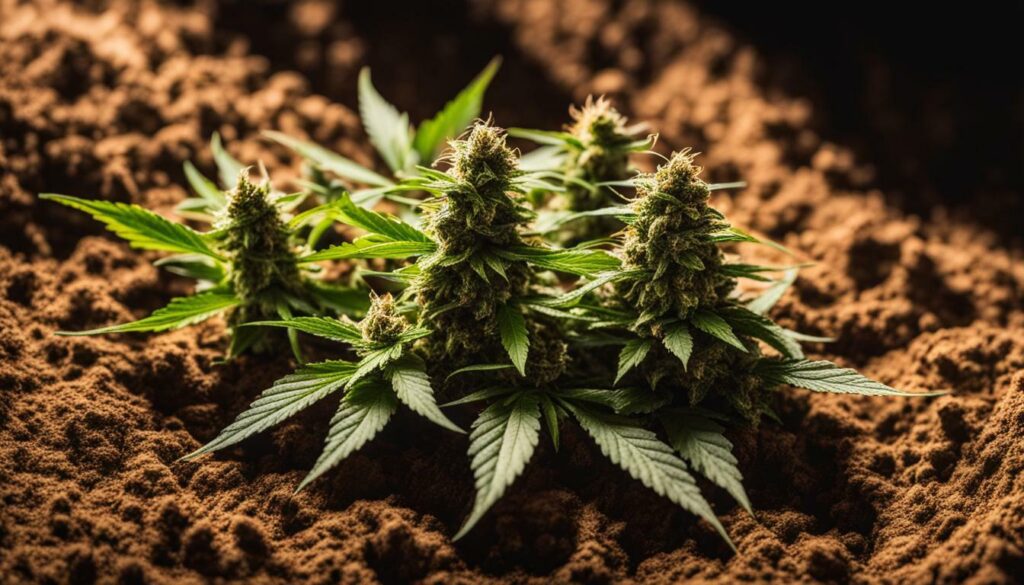
Stay tuned for the next section, where we will cover how to provide an ideal growing environment for your cannabis plants!
Providing an Ideal Growing Environment
Creating an optimal growing environment is essential for cultivating healthy cannabis plants. As a grower, you have control over various environmental factors that impact plant growth, including:
- Temperature: Cannabis plants thrive in warm temperatures between 65°F and 80°F during the day and slightly cooler temperatures at night, between 60°F and 70°F.
- Humidity: During the vegetative stage, a relative humidity (RH) level between 40% and 70% is ideal. During the flowering stage, lower the RH level to 40%-50% to prevent mold growth.
- Light: Cannabis plants require ample light for optimal growth. During the vegetative stage, plants need at least 18 hours of light per day. During the flowering stage, reduce the amount of light to 12 hours per day.
- Ventilation: Good ventilation is essential for maintaining proper temperature, humidity, and air circulation. This helps prevent mold and mildew from growing and reduces the risk of pests and diseases.
- Space: Ensure your plants have enough space to grow and develop without competing for resources. Be mindful of the size of your plants and the size of the containers they are growing in.
By monitoring and controlling these factors, you can create a stable environment that promotes optimal plant growth. In the next section, we’ll delve into the critical process of germinating your weed seeds and sprouting them into seedlings.
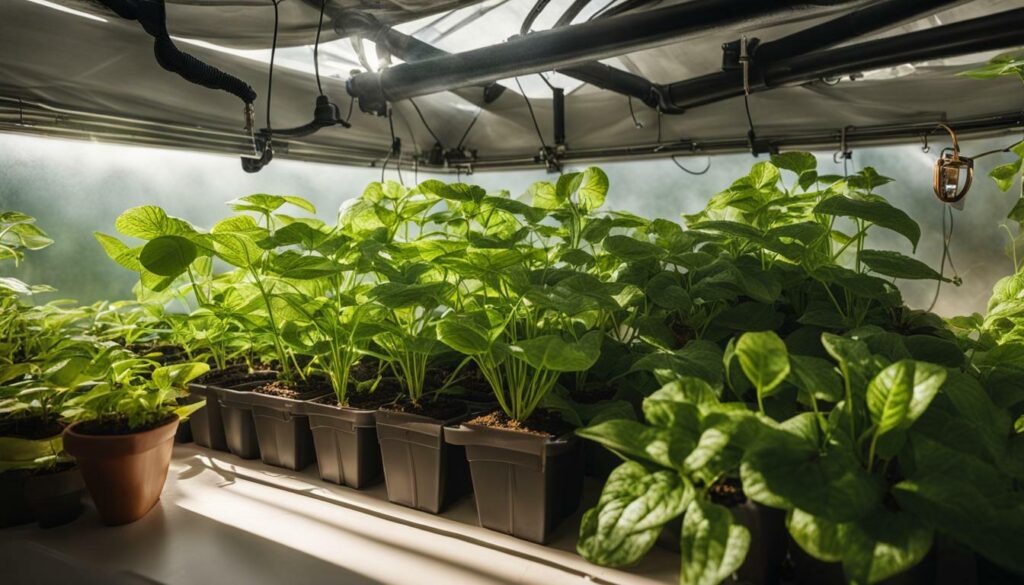
Germination is the first step in successfully growing weed seeds. It’s a crucial stage that determines the plant’s overall health and growth potential. Here are the steps to follow for a successful germination process:
- Start by gathering all your supplies. You will need paper towels, filtered water, a plate, and of course, your marijuana seeds.
- Take two paper towels and soak them in filtered water, ensuring they are moist but not dripping. Spread one paper towel on the plate and place the cannabis seeds on it, leaving a little space between each seed. Cover the seeds with the second paper towel.
- Place the plate in a warm, dark, and moist location, preferably between 70-90°F, for optimal germination temperature.
- Check the paper towels every 12 hours, add filtered water, and ensure that they remain moist until the seeds sprout, which should take between 24-72 hours.
- Once the seeds have sprouted and the taproot has emerged, it’s time to plant them in a container with a nutrient-rich growing medium. Use tweezers to handle them gently and avoid damaging the roots that will sprout from the seeds.
While the paper towel method is the most common way to germinate marijuana seeds, some growers prefer alternative methods like placing the seeds directly into a container with moist soil or using a specialized germination kit.
During the germination stage, it’s crucial to maintain optimal conditions for successful sprouting, such as adequate moisture, warmth, and darkness. Light shouldn’t be applied until the seeds have sprouted, as too much light can cause them to dry out and die.
Tip: Keep the seeds in a closed container to maintain moisture levels. Remember to check them every 12 hours and avoid exposing the seeds to light until they have sprouted.
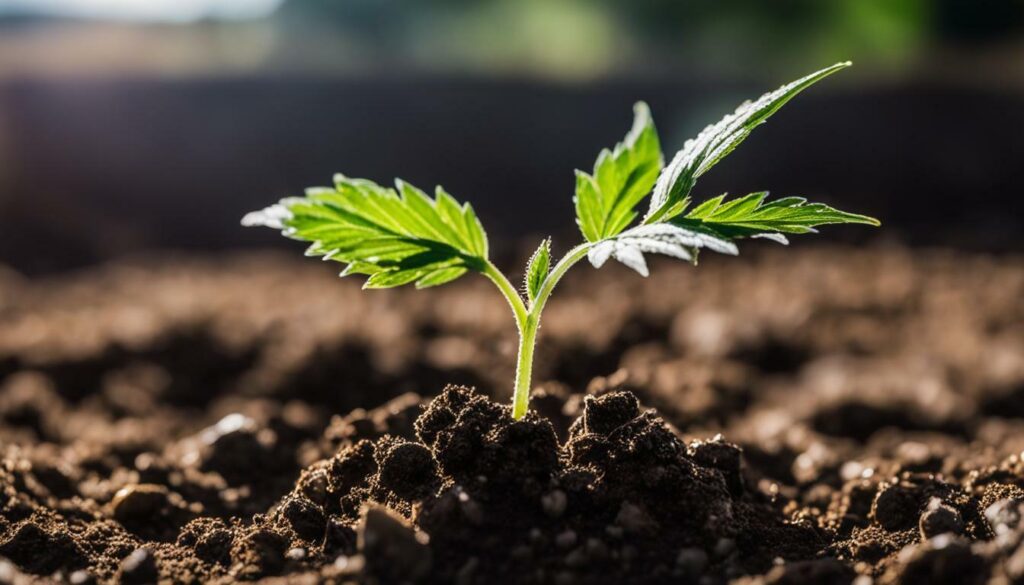
Now that your weed seeds have sprouted into seedlings, it’s time to plant them in suitable containers. Choosing the right container for your cannabis plants is crucial for their healthy growth. You can use plastic or clay pots, fabric containers, or even recycled containers, as long as they have proper drainage holes to prevent water from accumulating.
When it comes to the soil, it’s important to use a nutrient-rich medium that allows for proper drainage. You can buy pre-made soil or create your own mix using ingredients such as peat moss, perlite, vermiculite, or coco coir. Make sure to create a loose, airy soil mix that will allow your cannabis plant’s roots to breathe.
Once you have your container and soil ready, gently transfer your cannabis seedling into the container, ensuring that it’s planted at the same depth as it was in the previous medium. Cover the roots with soil and give it a gentle press to make sure it’s secure in the container.
Provide your cannabis seedlings with the right amount of light, water, and nutrients to support their growth. Aim to keep the soil moist but not overly wet and avoid overwatering, which can drown the roots. Pay attention to the leaves and look for any signs of nutrient deficiencies or pests.
As your cannabis plant grows, make sure to provide enough space for it to thrive. Avoid overcrowding multiple plants in one container, which can limit their growth and yield. Instead, give each plant its own container, providing adequate space for the roots to expand.
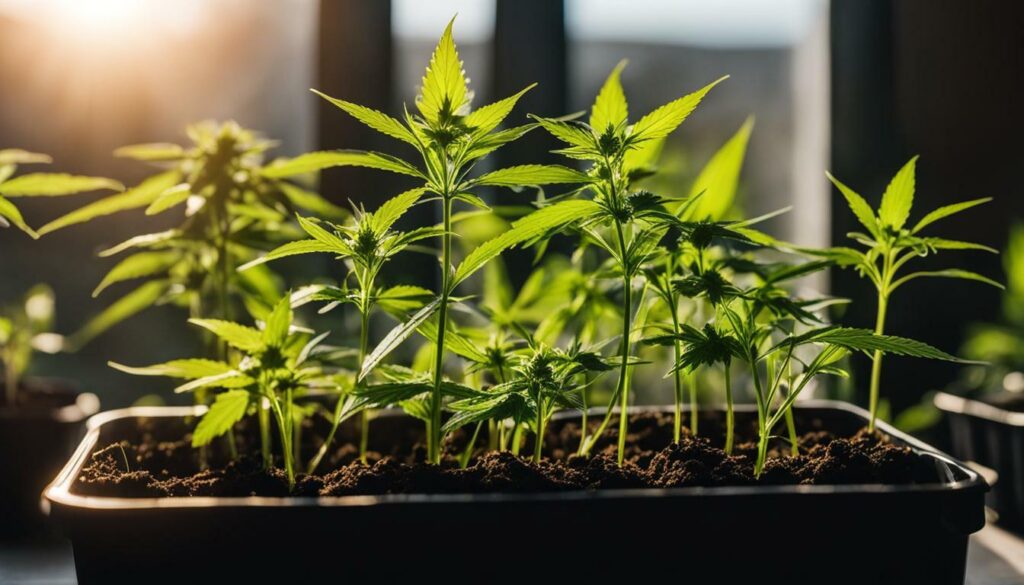
Overall, planting and nurturing cannabis seedlings requires proper attention to detail, including the container, soil, nutrients, roots, light, water, and space. With the right care and guidance, your cannabis seedling will grow into a healthy plant.
The Vegetative Stage: Growing Healthy Cannabis Plants
During the vegetative stage, your cannabis plants will experience rapid growth and development. It is essential to provide your plants with the right nutrients, light, and watering schedule to ensure healthy leaf production and vigorous plant growth. In this section, I’ll give you some tips on how to help your cannabis plants thrive during the vegetative stage.
Providing the Right Nutrients
During the vegetative stage, your cannabis plants will require an ample supply of nutrients to sustain their rapid growth. Cannabis plants need a balanced diet of macronutrients, such as nitrogen, potassium, and phosphorous, as well as micronutrients like iron, magnesium, and calcium. Providing the right nutrients will ensure your plants have the best chance of producing healthy leaves and strong stems.
Optimizing Light and Watering
During this stage, your cannabis plants will need plenty of light to promote healthy growth. You can use artificial lights such as LED or HID grow lights to supplement natural sunlight. The amount of light your plants require will depend on the strain, but generally, you’ll want to give them 18 to 24 hours of light per day.
Watering is also crucial during this stage. You’ll want to keep the soil moist but not waterlogged. Overwatering can lead to root rot, so it’s important to let the soil dry out slightly before watering again. You can use a moisture meter to measure the soil’s moisture levels and adjust your watering schedule accordingly.
Choosing the Right Growing Medium
The growing medium you choose will also impact your cannabis plants’ growth during the vegetative stage. Some common growing mediums include soil, coco coir, perlite, and vermiculite. Each medium has its own benefits and drawbacks, so it’s essential to choose one that works best for your specific needs.
Monitoring Plant Growth
During the vegetative stage, your cannabis plants should experience rapid growth, producing healthy leaves and strong stems. It’s important to monitor your plants’ growth and make adjustments to their environment, nutrients, and watering schedule as needed. Keep an eye out for any signs of nutrient deficiencies, such as yellowing leaves or stunted growth, and adjust your feeding schedule to correct the issue.
By providing the right nutrients, optimizing light and watering, choosing the right growing medium, and monitoring plant growth, you can help your cannabis plants thrive during the vegetative stage.
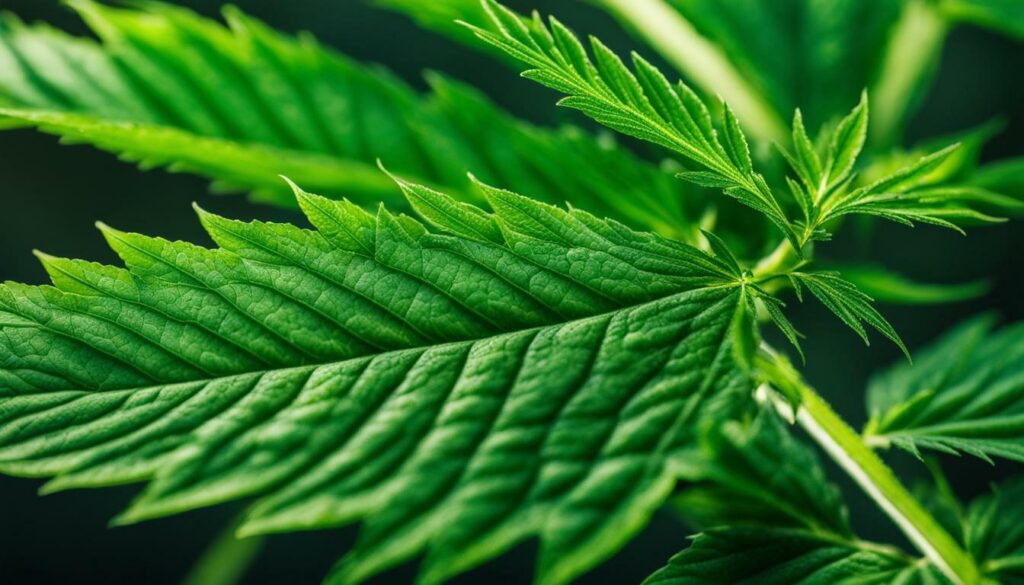
After the vegetative stage, your cannabis plants will eventually enter the flowering stage. During this time, the buds of your cannabis plants will start to produce trichomes, which are responsible for the majority of the plant’s THC and CBD content. This is the stage where your plants will start to smell strongly and become more visually appealing.
To ensure a successful harvest, it’s important to identify when the buds are ready for harvesting. One way to do this is by examining the trichomes with a magnifying glass. When the trichomes are milky white, it’s usually a good indication that the buds are ready for harvest. Some strains will also have an orange or red color at peak ripeness.
When it comes time to harvest, make sure to cut the buds carefully and hang them upside down in a cool, dry place to dry out. This process can take anywhere from a few days to a few weeks, depending on the humidity levels in your drying area.
Once your buds are dry, it’s time to cure them. Curing is the process of keeping your buds in a sealed container for several days to several weeks, opening the container occasionally to release any moisture. This process helps to improve the flavor and aroma of your buds while also increasing potency.
Harvesting and curing your weed plants is a rewarding experience that can result in a high-quality product. With the right techniques and attention to detail, you can achieve a successful harvest that will provide you with buds for months to come.
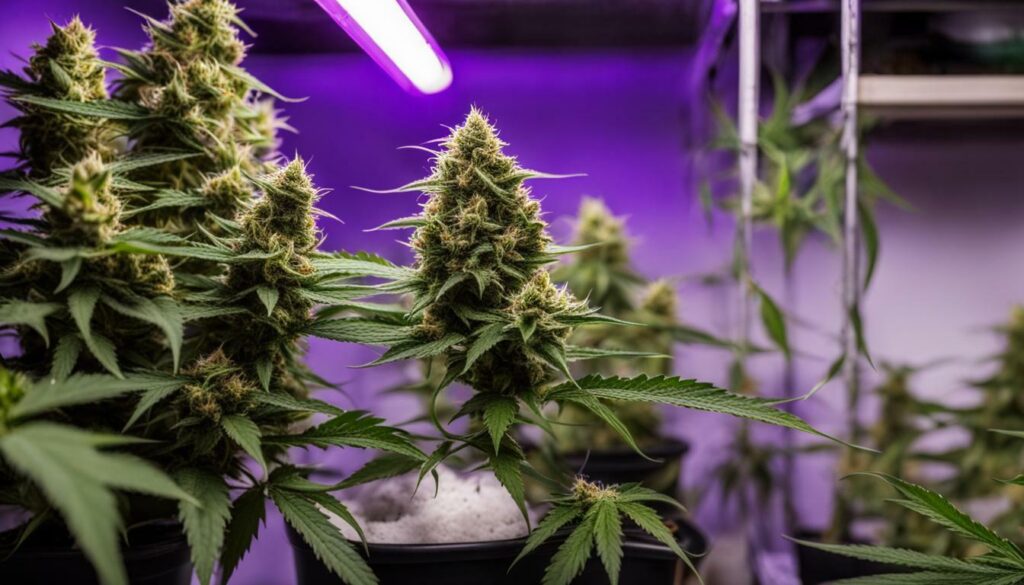
For those looking to take their cannabis cultivation to the next level, advanced techniques like hydroponics, aeroponics, and cloning offer exciting possibilities.
Hydroponics is a system of cultivating plants without soil, instead using a nutrient-rich water solution that is circulated to the roots. This method allows for precise control of the nutrients and pH levels, resulting in faster growth and higher yields.
Aeroponics takes the concept of hydroponics a step further, suspending the plants in the air and misting their roots with a nutrient solution. This method is even more efficient than hydroponics, allowing for maximum oxygen and nutrient absorption.
Cloning is the process of taking a cutting from a mature cannabis plant and growing it into a genetically identical copy. This can be an effective way to maintain desirable characteristics and ensure consistency in your crop. To clone a cannabis plant, you’ll need to carefully cut a section of the stem and encourage it to grow roots in a nutrient-rich medium.
No matter which advanced technique you choose, it’s crucial to maintain optimal pH and nutrient levels in your system. Regular monitoring and adjustments will help ensure the health and productivity of your cannabis plants.
For those interested in trying out these techniques, it’s important to research and invest in the necessary equipment and materials. With the right system in place, you’ll be able to experiment with different methods and discover what works best for your growing preferences and needs.
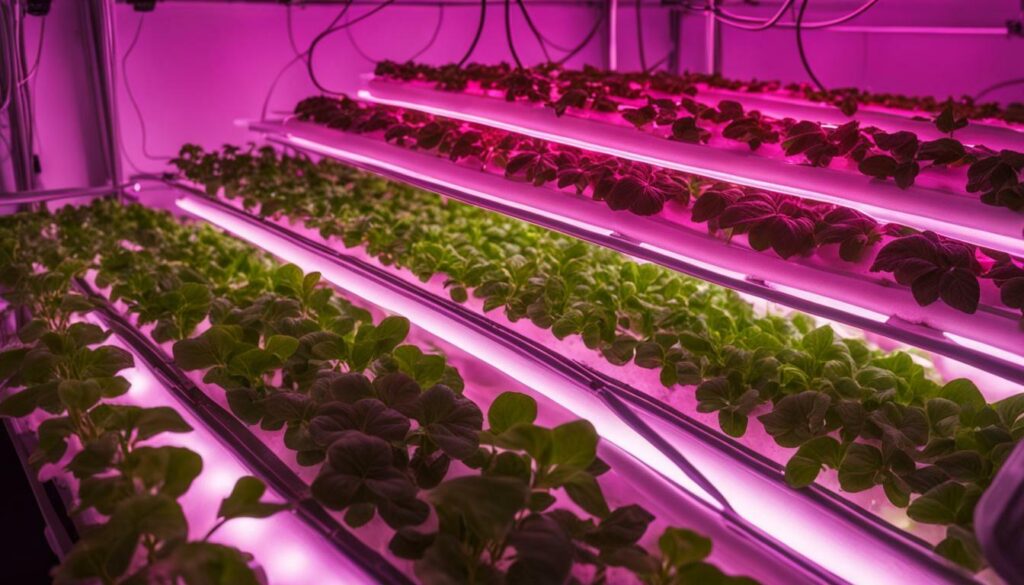
While growing marijuana plants can be a rewarding experience, it can also come with challenges. From pests and diseases to nutrient deficiencies and environmental issues, there are several common problems that can affect the health and growth of cannabis plants.
One of the most common issues faced by marijuana growers is pests. These can include spider mites, aphids, and thrips, among others. To prevent and treat pest infestations, it’s essential to inspect your plants regularly and use organic pest control methods such as neem oil or insecticidal soap.
Diseases can also be a problem for cannabis plants, with issues such as powdery mildew and root rot being frequent culprits. To prevent disease, it’s essential to maintain proper humidity levels and avoid overcrowding your plants. Adequate ventilation and air circulation can also help prevent these issues.
Nutrient deficiencies are another common problem that can impact the health and growth of marijuana plants. To prevent these issues, it’s essential to provide your plants with the necessary nutrients throughout the growth cycle. pH imbalances can also lead to nutrient deficiencies, so it’s essential to monitor and adjust the pH levels of your growing medium.
Other potential issues include over or under watering, inadequate lighting, and environmental factors such as temperature and humidity. To prevent these problems, it’s essential to maintain a consistent watering schedule and provide the right amount of light and optimal growing conditions for your specific strain.
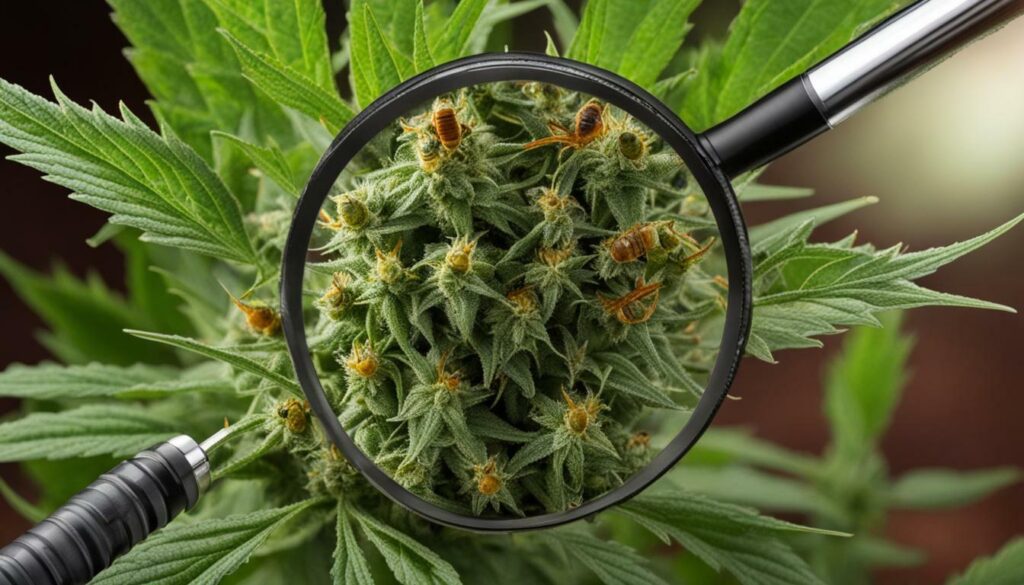
With proper care and attention, you can overcome these common challenges and produce thriving cannabis plants. By staying vigilant and taking action when necessary, you can ensure a successful and bountiful harvest.
Conclusion
In conclusion, growing marijuana plants from seeds requires careful consideration and planning. By following the steps outlined in this guide and implementing the tips and information provided, you can cultivate healthy and thriving cannabis plants that produce high-quality buds.
Throughout the cultivation process, it is essential to pay attention to the specific needs of your plants, including the right amount of nutrients, light, water, and space. This attention to detail can result in a more bountiful harvest and overall better production.
The benefits of marijuana cultivation are endless, from providing a sense of accomplishment to saving money on dispensary purchases. With the right technique and knowledge, you can create your own green oasis and enjoy the many benefits of home cultivation.
I hope these tips and insights have been helpful as you embark on your own marijuana cultivation journey. As you continue to learn and experiment, always remember to enjoy the process and have fun with your plants. Happy growing!
FAQ
Q: How do I choose the best cannabis seeds?
A: When selecting cannabis seeds, consider factors such as strain type and your desired effects. Whether you prefer indica or sativa strains, choose seeds that align with your preferences and goals.
Q: What is the ideal growing environment for weed seeds?
A: To provide an ideal growing environment, maintain optimal temperature, humidity, light, and ventilation conditions. Ensure your cannabis plants have enough space to thrive.
Q: How do I germinate weed seeds?
A: To germinate weed seeds, you can use the paper towel method. Keep the seeds moist, provide adequate light and temperature, and watch for successful sprouting.
Q: What should I consider when planting and nurturing cannabis seedlings?
A: When planting cannabis seedlings, choose suitable containers and nutrient-rich soil. Pay attention to root development, provide proper light, water, and space for healthy growth.
Q: How do I grow healthy cannabis plants during the vegetative stage?
A: During the vegetative stage, provide the right nutrients, light, and watering schedule for robust leaf production and vigorous plant growth. Choose the appropriate growing medium for your plants.
Q: How do I flower and harvest my weed plants?
A: As your cannabis plants enter the flowering stage, monitor bud production and harvest at the right time for optimal potency and quality. Learn essential tips to maximize bud production and achieve a successful harvest.
Q: What are some advanced techniques for growing cannabis?
A: Explore advanced cultivation techniques such as hydroponics, aeroponics, and cloning to enhance your growing skills. Maintain proper pH levels and provide the right nutrients for optimal results.
Q: What should I do if I encounter problems while growing weed seeds?
A: If you experience issues such as pests, diseases, or nutrient deficiencies, troubleshoot the problems and follow prevention and treatment tips. Ensure the health and vitality of your cannabis plants throughout the growth cycle.
Q: What should I know in conclusion about growing weed seeds?
A: Congratulations on gaining the knowledge and tools to successfully grow weed seeds. This guide has provided step-by-step instructions, cultivation tips, and information on selecting seeds, caring for plants, and harvesting your own marijuana crop.